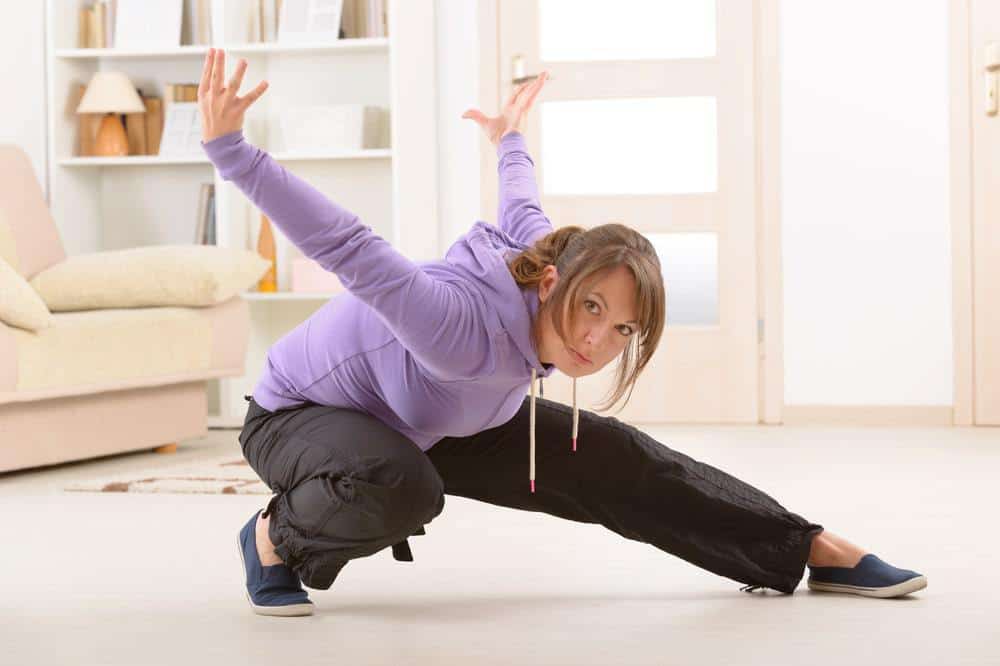
So you finally want to practice QiGong and take a step in managing your physical and mental state?
See, life becomes more complicated as we grow older. The youth and energy we possess can deteriorate with constant challenges and toxicities that life throws at us. When we cannot manage these forces, we may suffer from stress, tension, anxiety, and indirectly cause illness.
Here is where practicing QiGong can be helpful.
However, QiGong for beginners can be too overwhelming to understand. Especially when you start getting acquainted with the Chinese terms, you will probably end up getting lost even before you start your first set of qigong exercises.
Some people think that QiGong is a form of martial arts. Some even thought it was some religion.
Although QiGong can be a beneficial application on these two, there is so much more to it. So before you end up with the wrong conclusions, let’s start with taking one step at a time.
In this guide, I’ll take you on a definitive tour to understand QiGong. You will learn how it can help your well-being and try qigong exercises that have developed after many years.
What Is QiGong?
QiGong is a term generated from two Chinese words Qi and Gong.
Qi or Chi means life vital force. We can say that Qi is one’s vital energy.
Gong means mastery, honing, or cultivation.
So technically, QiGong is the mastery or cultivation of vital energy.
Still does not make sense? What does it have to do with stress, pressure, or chronic pain?
The ancient Chinese believed that to avoid pain or illnesses and stay healthy, one must ensure that our vital force or energy flows freely on its pathways, often called meridians.
Meridians must stay open so that it has space to move. Having blockages on these pathways causes energy build-up and lead to malfunction on that body part: pain, stress, inflammations, or ailments.
With QiGong, you will have a system or a series of practices where these pathways will stay open. It involves a system of simple body movements, breathing exercises, and mental concentration.
In other words, you will manage the flow of natural energy using air, body and mind.
The Beginning of QiGong Practice
Initially, the practice went by the name: Nei Gong, which means inner skill or inner work, or Dao Yin, which means leading energy.
The name changes only mean that the practice has been through many developments.
Early pieces of evidence date back about four or five thousand years ago. Archaeologists found figures of animal postures and dances carved into rock arts. The Book of Change in 1100 B.C. first documented the concept of qi. Lao Tzu recorded breathing techniques in the book Dao De Jing.
Moreover, the current QiGong evolved by incorporating yoga and Buddhism meditation techniques. It has become the core practice for spiritual and martial arts training.
The practices of different styles were family secrets that passed on to generations. In the 1960s, it faced scrutiny. Some regulations banned the practice of QiGong. But because of the devotion of Qigong masters, they were able to pass it on to generations, in secret, especially for healing therapy purposes.
Chinese physicians, who were also QiGong masters, prioritized it as their core of treatment. It was about two decades ago when QiGong gained recognition from Western countries. Chinese medicine, especially QiGong, has been studied and published in papers.
How Can QiGong Help Your Well-Being? (important qigong benefits)
In Chinese medicine, achieving balance in physical, mental, spiritual, and emotional health is an oath. These aspects equally affect one another.
Especially at a time when most people stay at home like today, our energy needs to flow. If there’s an imbalance of energy flow in any of these aspects, the others would be affected.
For example, spending time on the phone can bring happiness because it is simply entertaining. However, it can lead to a heavy feeling the longer you spend time on it because the energy is stocking up on your body due to lack of movement.
Energy could build up pressure on the pathways, resulting in stress and anxiety. It results in the malfunctioning of the energy pathways responsible for sleep.
This is an example of how an imbalance of one aspect can affect another. We need to balance the flow of energy. The energy balance helps to get the body back to its natural and functioning state.
Through QiGong meditation, you utilize focus, simple and gentle movements, and air to balance the energy flow.
In Taoism, when one part moves, all other parts will also move.
If there’s an imbalance of energy flow in any of the physical, mental, spiritual, and emotional aspects of our health, the others would be affected.
Not only that, there are even more benefits of Qigong. In case you are still wondering why start qigong practice, here’s the list of most important qigong benefits:
- Strengthens the bone’s density
- Improves blood circulation
- Reduces chronic pain
- Improves well-being
- Increased productivity
- Enhances mood
- Improves sleep
- Activates the body’s natural healing process
- Expands consciousness
How Many Types of QiGong Are There?
There are two main types practiced by many:
Personal Cultivation. This type of QiGong aims to discover oneself by regulating one’s own Qi. This set of practices helps in preventing diseases and enhancing well-being.
Clinical QiGong. Sometimes called energy healing, trained practitioners use their breath, movements, and mind to reverse ailments or help people experiencing pain.
All in all there are four types of QiGong:
Health QiGong
Health Qigong is a set of self-regulation practices that aims to prevent illnesses, stay healthy, and improve self and well-being. These practices target the following to balanced well-being:
- Immune system
- Nervous system
- Internal organs
- Pain sources
- Hormones
Martial or Sport QiGong
This set of practices aims to tune the body to condition it for physical activities such as martial arts or sports. They help improve the following:
- Stamina
- Flexibility
- Speed
- Agility
- Dexterity
- Balance
- Strength
Medical QiGong
The medical QiGong is a set of practices where you can teach self-cultivation, evaluate illnesses, and prescribe QiGong practices, so you can reverse self or other people’s illnesses and help them to recover their body’s natural energy.
To do this, one must train, study, and be capable to manage own energy.
Spiritual QiGong
Spiritual QiGong is a set of practices used to connect one’s self to outside energy like heaven and earth.
How Many Moves in QiGong Are There?
There are over 3000 QiGong exercises that exist, and you do not have to learn them all. There are only twelve primary meridians and eight secondary meridians. Most QiGong sets have 12 to 18 movements. And they are already enough to cover the meridians in your body.
All it takes are a few QiGong movements and practice them well. Let us say you are practicing a set of twelve. You still do not have to practice all those moves every day.
You can even practice with one QiGong exercise and do it every day; one QiGong exercise and master it.
What Is QiGong Breathing?
The first thing you need to learn in QiGong is your mastery of breathing. Breathing is the most fundamental exercise in QiGong. When you can control your breathing, you can manage your body better.
Thankfully, breathing is a natural exercise that our body does. Breathing is also a helpful response when our body senses danger.
Qigong breathing mainly comes from the Taoist methods of breathing, where one focuses on naturally returning the air we breathe back in harmony to where they come from— nature.
Our body responds to breathing in these ways:
- Slower and gentler heartbeats are more effective
- Relaxed muscles
- Relaxed blood vessels to lower blood pressure
The key responses of our body to breathing help these energies to keep flowing in the body. When one is feeling stressed, we experience pressure build-up in our body.
You might not notice it, but when you start breathing deeply, the energy will flow back naturally, removing the build-up and returning our body to its natural state.
QiGong breathing is the first exercise you should know. Ideally, to perform QiGong breathing, you have to breathe through your belly and not entirely from your chest. You performed this type of breathing when you were just a baby.
1. Your breath should come in and out from your nose. Do not hold your breath. When inhaling, let the air flow down smoothly to your lungs and belly.
2. Exhale naturally by letting your belly relax to its former position. Do not force your chest to inhale or exhale to puff out your breath. Also, do not let your genitals exert any pressure to move your lower belly.
3. Your belly should be able to expand and relax naturally by now. It’s time to focus on your middle and upper belly. Put your hands above the middle and upper part of your belly so you can see how it moves. Your hands should move outwards, while your belly expands.
4. Now, you can practice expanding and relaxing your upper belly. This time, let your diaphragm help by making it move downward while you inhale, and upward as you exhale. Your upper belly should expand and relax naturally.
Which QiGong Is the Best for Beginners?
Now you have the core exercise of QiGong for beginners, let’s discuss the exercises best for beginners.
Pushing the Heavens
This is one of the most basic movements to do as a beginner. It resembles a slow movement of lifting to push your hands up. It starts with a relaxed standing position with your palms resting on the side, then shifting slowly with palms facing outward and fingers a few inches apart.
Next, you will have to breathe in as you lift your hand’s palms outward with your shoulders and elbows relaxed. As soon as it levels with your heart, breathe out until your hands are already on the top of your head.
Slowly breathe in, and then put down your hands as you push them relaxed outward. And then breathe out as soon as it reaches your heart. Let your hands return to their initial position naturally.
What does it do?
- Stimulates and regulates the heart, lungs, stomach, and spleen
- Regulates heart rate
- Improves blood circulation
- Relaxes the muscles
- Lowers blood pressure
Finger exercise
This is an easy exercise, and even children can do it. It starts with your feet standing relaxed apart. All your weight should sink slowly on the ground, without any force from your shoulders and elbows. As you do this, you have to breathe from your belly and lift your arms lightly without any effort applied.
With your palms lifted at the level of your torso, start stretching and extending your fingers one by one from the thumbs. Stretch or extend them pointed and with the same pressure for each finger. Apply light pressure and relax each one as you switch to another finger.
What does it do?
- Strengthens your fingers equally
- Makes your fingers equally flexible
- Promotes balance between the fingers and hands
Separating the Heaven and Earth
This movement is to pull your hands away from each other and to bring them back together in your chest, similar to holding a ball. Start by standing in a relaxed position with your feet apart.
Your left palm should face downward and in your upper abdomen level. Your right palm should face upward and in the lower abdomen. This position now is similar to holding a ball, like the ones you see in martial arts movies.
From that position, you will breathe out as you stretch them apart: the left hand pushing upwards and the right hand pushing downwards. And then breathe in as you bring them closer in the initial relaxed position.
What does it do?
- Conditions and strengthens the arms, shoulder, abdominal muscles, and muscles in the back
- Improves stomach and spleen functions
- Improves the heart rate
- Improves blood circulation
There are other basics movements you can do as a beginner:
- Pulling the bow to shoot
- Toe bounce
- Wise owl gazes backward
- Sway the head and swing the tail
- Punch angrily
These are just to name a few, but you train to breathe with your belly to start with these exercises.
Can QiGong Make You Stronger?

Yes. Martial artists found these QiGong movements with the following techniques helpful in strengthening the body:
- Standing in low-stance
- Absorbing external energy to the body
- Charging the body with vibratory current
- Breathing compressions
- Shifting one’s qi or tension to another part of the body
Is QiGong a Form of Meditation?
Yes. QiGong utilizes focus and concentration, controlled and gentle movements, and breathing techniques. Given that the practice alleviates stress and anxiety, plus these exercises are helpful for healing and therapy.
How Often Should You Practice QiGong?
While the practice may be new, it’s not an excuse not to practice QiGong daily. You have nothing to lose when you dedicate a few minutes, about ten to fifteen minutes a day.
While you won’t notice the difference in the first days of your practice, you’ll gradually feel its effects as you keep practicing. You will feel light, and your stress becomes manageable.
You’ll feel a lot healthier and younger as the energy in your body becomes useful and able to travel the pathways in your body.
And like we always say, you can always control your chi. Start with QiGong breathing, and you’ll learn the other aspects of QiGong for beginners the right way.
Ways to Learn QiGong
Here are different ways to learn QiGong:
- Find a QiGong teacher
- Hire an online tutor
- Take online QiGong classes
- Learn by yourself.
Qigong Online Course- My Recommendation:
If you’re interested in an excellent Qigong online course from an internationally renowned expert and practitioner then I highly recommend Modern Qigong quest by Lee Holden.
Here’s a quick overview of what’s inside the course from Lee.
How long does it take to learn qigong?
The course is 10 hours long and was divided into small ‘digestible chunks’ over 30 days. So it’s 30 days of learning and possible some additional time to practice. For me personally 60 days was enough to learn and practice.
Still on the fence about it? Why not try Lee’s FREE Masterclass to get the feel for his teaching and what to expect. In here, Lee will help you understand how Qigong is a proven healing practice that recharges body and mind in just minutes a day! Enjoy it!
Related Posts:
Healing With Energy – 7 Holistic Energy Therapies That Work!
Qigong vs Tai Chi – Differences and Benefits
Is Qigong a Spiritual Practice? What Can Spiritual Qigong Do for You?







